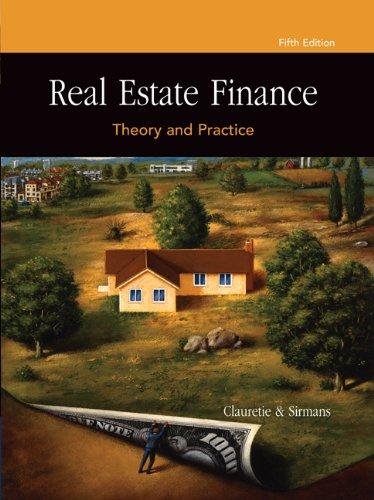
- What is the best option from a strictly financial standpoint? For simplicity, assume all salaries are paid in full at the end of each year.
- Greg was discussing his analysis with a friend, who mentioned he should calculate the future value of each of the scenarios since what matters is the amount of money when he retires. How would you evaluate this statement?
- Although Greg believes he'll be able to get jobs paying the amount stated above for each of the programs, he is trying to understand better how much the initial salary estimate is impacting his decision. Assuming all else equal, what would the initial salaries be for each of the programs so that Greg is financially indifferent between attending that specific program or staying in her current position?
Greg is a recent graduate with two years of experience in his current role and is looking at getting a Graduate/PhD degree. He is currently paid $50,000 per year, which he expects to increase at a 3 percent rate until he finally retires. Greg is 25 years old and expects to work for 40 more years. His current employer offers a benefits package that includes health insurance. Greg has saved enough money to pay for a possible tuition expense and is currently taxed at 20 percent. Greg was accepted for two different programs and is debating between the two programs. The details of each program are below: Program A is a two-year full-time program with annual tuition of $40,000 due at the beginning of each academic year. According to the program's website, the required supplies are estimated to cost about $2,500 per year. The school offers a health plan for $4,500 per year. Program B is a one-year full-time program with a tuition of $60,000 due at the beginning of the program. Although the supplies were not listed specifically on their information packet, Greg estimates a total cost for supplies and books of around $6,000. The school offers a health plan for $5,500 per year. Both programs offer on-campus housing which, according to Greg's estimates, should save him about $5,000 per year. Since both programs are full-time, Greg will need to leave his current employer if he decides to accept any of the offers. Greg is anticipating that he will be able to secure a job offer for about $75,000 per year after graduating from program A, with a $6,000 signing bonus. The salary at this job will probably increase at 5 percent per year. Since the pay is much higher than his current income, Greg expects his average tax rate will increase to 27 percent. For program B, Greg thinks that he will most likely be able to get an offer of $65,000 per year upon graduation, with a $5,225 signing bonus. The salary at this job will increase at 4.75 percent per year and, due to the increased level of income, his average tax rate will be 24 percent. Given the risk of starting a new degree, Greg feels that the appropriate discount rate is 6 percent. Greg is a recent graduate with two years of experience in his current role and is looking at getting a Graduate/PhD degree. He is currently paid $50,000 per year, which he expects to increase at a 3 percent rate until he finally retires. Greg is 25 years old and expects to work for 40 more years. His current employer offers a benefits package that includes health insurance. Greg has saved enough money to pay for a possible tuition expense and is currently taxed at 20 percent. Greg was accepted for two different programs and is debating between the two programs. The details of each program are below: Program A is a two-year full-time program with annual tuition of $40,000 due at the beginning of each academic year. According to the program's website, the required supplies are estimated to cost about $2,500 per year. The school offers a health plan for $4,500 per year. Program B is a one-year full-time program with a tuition of $60,000 due at the beginning of the program. Although the supplies were not listed specifically on their information packet, Greg estimates a total cost for supplies and books of around $6,000. The school offers a health plan for $5,500 per year. Both programs offer on-campus housing which, according to Greg's estimates, should save him about $5,000 per year. Since both programs are full-time, Greg will need to leave his current employer if he decides to accept any of the offers. Greg is anticipating that he will be able to secure a job offer for about $75,000 per year after graduating from program A, with a $6,000 signing bonus. The salary at this job will probably increase at 5 percent per year. Since the pay is much higher than his current income, Greg expects his average tax rate will increase to 27 percent. For program B, Greg thinks that he will most likely be able to get an offer of $65,000 per year upon graduation, with a $5,225 signing bonus. The salary at this job will increase at 4.75 percent per year and, due to the increased level of income, his average tax rate will be 24 percent. Given the risk of starting a new degree, Greg feels that the appropriate discount rate is 6 percent







